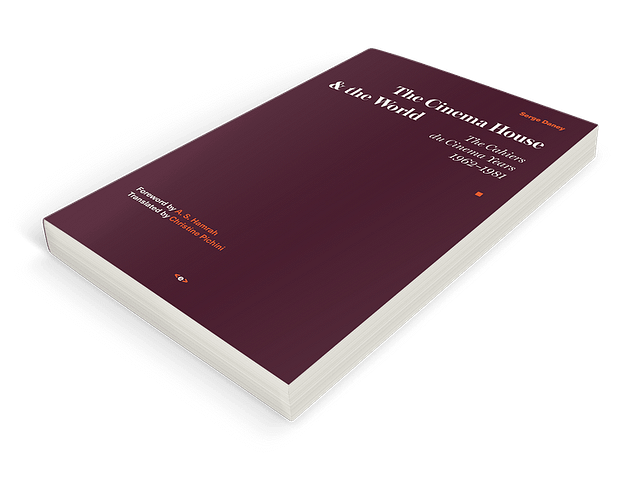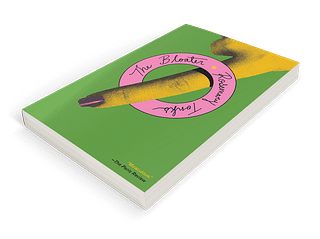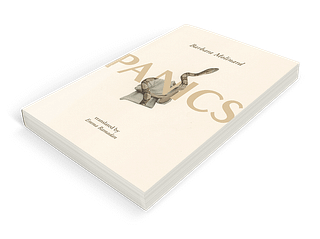Book Review Online
The Only Film Critic of Real Value in France
On Serge Daney’s The Cinema House and the World.
By Jeffrey West Kirkwood

The Cinema House and the World
Serge Daney
Translated by Christine Pichini
semiotext(e), $35
By the end of 1970, François Truffaut had left the editorial board of Cahiers du Cinéma. This was no small departure. The magazine was the lodestar for film theory in France and the world at large, and Truffaut was a founding member of the publication’s 1951 editorial team, alongside other existing and would-be titans of cinema André Bazin, Jean-Luc Godard, Claude Chabrol, Eric Rohmer, and Jacques Rivette. But in the wake of May 1968 — during the publication’s so-called “red years” — Truffaut made a less than French exit. In an interview buried near the very back of an issue of the magazine early in 1971 under the simple heading “Le depart de F. Truffaut,” the leader of the French New Wave said: “Today at Cahiers they do Marxist-Leninist analysis of films. Reading the magazine is impossible for anyone who isn’t an academic. As for me, I’ve never read a single line of Marx.” Maybe because I’m an academic, have read some Marx, and think “academic” is a lazy insult, I considered these years to be the journal’s finest. Or I did until I read the 597 heady pages of Serge Daney’s collected writings in The Cinema House & the World: The Cahiers du Cinema Years, 1962–1981.
What Daney’s writing grants us that was so often absent among many of his better-known, more doctrinaire peers, is a prolonged view onto both the inseparability and the perpetual uneasiness between the demands of art and those of politics. The newly translated volume traces Daney’s path from a young contributor at Cahiers, to the guiding voice and editor of the publication, to a reviewer (very often of tennis matches) for the newspaper Libération. Yet the story the collection tells is also of the evolution of Cahiers as a broader intellectual barometer: from champion of a pure filmic medium, to instrument of revolutionary politics, to a site of leftist disenchantment.
Cahiers didn’t become less “academic” when the two Serges (Daney and Toubiana) took it over from the two Jeans (Narboni and Jean-Louis Comolli) in 1974. Its rarified topics simply transformed from loud leftist political dicta associated with the disappointments of 1968 to more hermetic structures of cinematic language. When Daney assumed the editorial mantle, he would not entirely part ways with the virulent leftism of his predecessors. He was, after all, also teaching film at the newly-formed Centre Censier, a hothouse of post-68 radicalism, and remained actively devoted to the question of what role art — and film in particular — should play in leftist politics. But one gets a sense in the new volume that a certain politics was the price of admission for writing to a university-educated public about what he actually cared about: the craft of cinema.
There is a tangible bitterness in Daney’s writing about what became of such politics once the revolution failed and all that remained was a “Cultural Front.” While not on the same scale, this will feel familiar to anyone who, as a naïve, angry, and broke student placed some faith in the possibilities of Occupy Wall Street only to spend their more adult years forever within earshot of tyrannical celebrity Marxists of the Podcast-Proletariat. Unlike the very-online-Left, however, Daney’s recriminations never fail to include himself, and in the interview that serves as a kind of third introduction to the book, he laments “people like us who believed they were politicizing culture and ex-militant leftists who had understood their political failures” fled to “a ‘secondary front’ where they could continue to intimidate other people.” The results as he saw them were multiple and, again, not unfamiliar to today’s leftists: “artists were intimidated, inhibited by the burden of errors to avoid and tasks to undertake, and militants hid their lack of ideas and motivation behind an overly general discourse.” Everywhere Daney seems disappointed that no one cares about cinema on its own terms quite as much as he does. This was not lost on Gilles Deleuze, who remarked lovingly in a letter to the critic that “you still subscribe to the grand idea of cinema’s first period: cinema as a new Art and a new Thought.”
Deleuze located Daney’s unmatched virtue precisely. His talent was in his sensitivity to the subtle mechanics by which cinema produced its meanings — at the level of aesthetics, psychology, and politics — and to an entire cosmos of films in which those mechanics had been employed before. When reading this book, one gets the sense that Daney had both seen every film there was to see and contemplated them at length, from Michael Snow’s structural masterpiece La Région Centrale to Jaws 2.
Turning down the volume of the puerile revolutionary megaphone that Cahiers had become by 1973 wasn’t simply a matter of saving the magazine from financial ruin. It was, as Emilie Bickerton has written in her elegant history of the publication, about “fostering a better relationship between political militancy and cinephilia.” (Bickerton’s book, A Short History of Cahiers du Cinéma, serves as a great historical scaffolding for Daney’s essays and reviews, which are so numerous that they can leave the reader feeling lost in a daunting mountain of text). How to deal with the legacy of upheavals and shattered promises from 1968 had transfixed a generation of European intellectuals and artists. And in a 1977 piece for Le Monde diplomatique, Daney wrote that “Speaking of the ‘new philosophers,’ Gilles Deleuze correctly observes” that “it’s whoever spits on ’68 the most.’” In the world of cinema, on the other hand, he wrote that “the passage from post-’68 to pre-’78 has been accompanied less by spitting than by a double phenomenon, one of forgetting (which is normal), the other of amnesia (which is dangerous).” Daney occupied a middle position between these extremes. As the resident philosopher at the journal, he certainly does some entertaining spitting. But he also never seemed untroubled by the impossibility of forgetting the aspirations for a truly political mode of cinema.
In the roughly chronological arcs of the volume, wonderfully translated from the French by Christine Pichini, what becomes apparent is the maturation of the conflict between two poles defining film criticism following the earliest “yellow years” of Bazin’s charter — named for the journal’s yellow cover during that time. Bazin privileged analysis of great filmmakers’ masterful construction of mise-en-scène. Much like Bazin, Daney held fast to the idea of the auteur, which maintained a conviction that an individual, and arguably a figure of genius, produced rather than documented a reality. Daney repeatedly rejects the notion of film as offering the possibility of an unvarnished realism outside of the cinematic “utterances” that were the language of the filmmaker, which gives us a strong insight into why he so often returns to a Lacanian mode of analysis. Such a belief in a kind of artistic heroism is irreconcilable with a brand of Marxism that finds the very idea of the individual to be ideology masking material inequalities. A key characteristic of Daney’s work was his ability to hold these disparate commitments in tension.
This tense fulcrum orients Daney’s writings, and especially his series of essays from 1973 on the “Critical Function” that include an epigraph from Mao while also shifting attention away from a vague canopy of radical claims about Art writ large, back to the texture and form of actual films:
That every Marxist knows (as part of his ABCs) that the dominant ideology belongs to the dominant class and that a film is yet another tool for the bourgeoisie to impose upon us its vision of the world. But that knowledge remains dead, dogmatic, stereotyped and — as we know by experience — inoperative as long as we are unable to grasp, for each film, how it is imposed.
Politics, for Daney, could not be the set of aesthetic marching orders it had become in the years leading up to his role as editor. Later, in a text not included in this book, Daney would reflect with pointed embarrassment on what he dubbed the “non-legendary” period of dogmatism in the 1970s:
when I reread the Cahiers from the seventies, I’m less struck by the jargon, the arrogance, the ukazes, the dubious mockup, the lack of photos and the overflow of quotation marks, bolds and italics, than by the certainty we felt (and that I miss now) that cinema was worth thinking about — thinking hard about.
To think hard about cinema is something that all of Daney’s texts do admirably, even where his language, especially in earlier reviews, can fall into a vaporous and annoying big-paradoxes idiom of mid-century continental theory that cascades through enigmatic citations from Nietzsche, Blanchot, Bataille, or Lacan. In his beautiful encomium for the “blaxploitation” film Sweetback’s Baaadasssss Song, Melvin Van Peebles becomes “a true hero in the Blanchotian sense,” the end of Warren Beatty’s Heaven Can Wait is described as “entirely Borgesian,” and Jerry Lewis’s utterly shitty slapstick film The Family Jewels is celebrated as a “serious film” of seemingly Shakespearean proportion “because the actor has never been so unsure of himself, so threatened: he rejects artifice, makeup, magic, he appears as he is and for what he is, he runs the risk of becoming unrecognizable.” The latter not only proves the French do in fact love Jerry Lewis, but is roughly equivalent to treating the frank and beans genital humiliation sequence in There’s Something About Mary as a meditation on the traumas of subject formation, or Jim Carrey ventriloquizing out of his ass in Ace Ventura: Pet Detective as an existential question of what it means to never truly be able to speak as oneself. If you think I’m kidding, I encourage you to read Daney’s brilliant, extended Lacanian analysis of Francis Ford Coppola’s Apocalypse Now, which not only invokes Blanchot’s notion of “apocalypse” whose “nature” is “to disappoint,” but credits this disappointment to “having attempted the impossible: to film the unrepresentable phallus.” This is to say nothing of his — albeit once again brilliant — analysis of the woman’s off-screen voiceover in Godard’s Number Two “as an oral penis.” These are psychoanalytic formulations that might be unremarkable for film studies PhD students, but may leave less initiated readers with a strange taste in their mouths.
Nearly every one of Daney’s many (many) reviews reveals a profound sensitivity to the cinematic medium and an encyclopedic knowledge of its history. Improbably, the ability to carefully draw out the structural properties of individual films and to insist on their particularity emerges as the source for his politics. Over the course of years, he rails against “Esperanto cinema,” “Esperanto-based codes,” and “Marxist babble” that “becomes Esperanto.” The chief sin for Daney is to erase real differences in favor of universalized languages that have only “representation” and “stereotype” at their disposal. What he is attacking in cinematic terms is a logic of neoliberalism — examined somewhat favorably by Foucault in the 1970s — that disguises a megalithic system of commerce with paltry distinctions in content. No one was safe from ferocious and often hilarious criticisms of this nature, including Roberto Rossellini. Daney’s review of Il Messia, which he notes had an “original screenplay (the Gospels, supervised by God),” renders with a smile its savage judgment: “the most tepid form of a kind of Communion of secular saints (in the element of Culture for all: film as Communion host)… Something like an audiovisual Encyclopedia Alpha that would communicate only the idea of communication, the imperialist idea of a facile and obligatory communication.” A “Culture for all” is his nightmare, not because it democratizes the medium, but precisely because it doesn’t. It’s hard not to think here of the A24 visual style empire, which turns the arthouse into something more accessible that can only be described as “a vibe.” And in an “A24 Vibes Explained” article for JumpCut Online, a Daney-style point is made by simply remarking that when “an A24 movie release is on the horizon, the anticipation among film fans is almost capable of rivaling the comic book movie fanbase.”
Esperantism also becomes a powerful tool for critiquing self-congratulatory forms of internationalism and cloaked racism in decolonial terms. In his long analyses and meandering notes on film festivals and meetings with Cahiers in Syria, Tunisia, Hong Kong, India, and “Elsewhere” (as it is unfortunately designated in the volume, in reference to a film by Godard), he criticizes the disingenuous “politicization of location” that works as a kind of “model thinking” that is sterile and betrays a “total lack of curiosity about the production itself.” Under such conditions, he writes, “everything is reaffirmed… but nothing is critiqued”; or as A.S. Hamrah writes in the introduction, seizing on a turn of phrase Daney uses in reference to Beware! The Blob, everything is “blobbed” and “Criterionized.”
Compared with the eye-watering pantheon of brightly shining arthouse stars and theorists associated with the publication, Daney is a relative unknown. This has not been lost on film historians, who have made Daney famous among other film historians largely as a function of his obscurity. In the new introduction to the volume Hamrah — whose characteristic sharpness and mirth as a critic mirrors Daney’s own — notes that “we are so distant from Daney that mentioning his absence can no longer be called a cliché.” No doubt it had become a cliché, but only among those who knew he was missing from the Anglophone world in the first place. This volume is not likely to change that much, although it would be a great gift to film lovers if it did. Many of his texts have remained fixtures in both film theory curricula and studies of 1968 in France. In particular his blistering 1976 appraisal of Godard’s “bullying” didacticism after 1968 in “Le thérrorisé: pédagogie godardienne,” which is translated and published as a part or Routledge’s four volume set (and does not appear in this book), is especially beloved.
Despite never getting around to publishing a book-length single work, Daney has nevertheless remained a touchstone for a laundry list of big critics, theorists, and academics. When he died in 1992 at the age of only forty-four from complications related to AIDS, his lifelong friend (and sometimes enemy) Louis Skorecki called him “the only film critic of real value in France in the last twenty years and one of the only original writers on moving images.” This adoring hyperbole could turn out to be true for a generation of English readers with a more complete access to his writings, as we face the disappointment of watching radical politics once again turn into Esperanto. In his letter, Deleuze observed that Daney’s “critical optimism turns into critical pessimism.” Maybe our distance from Daney is diminishing as our optimism sours as well.


